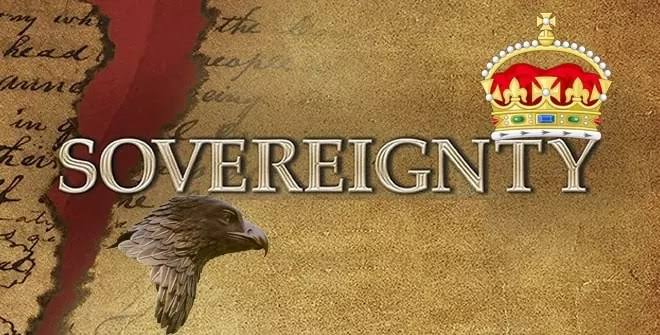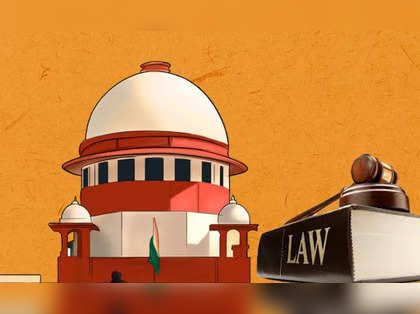Introduction
In earlier times, whenever a person did any kind of work, he was assigned a caste or varna on the basis of his deeds, like A warrior was given the caste of Kshatriya; a Pandit was given the caste of Brahmin; and a businessman was given the caste of Vaishya. In earlier times, even in other castes, people were not considered old enough to marry. For example, Maharishi Parashar married a fisherman’s daughter named Satyavati. And a scholar son was also born to both of them, whom today you and I know by the name of Maharishi Ved Vyas, the author of the Mahabharata. Now see, till the time casteism was going on on the basis of karma, there was not so much problem, but then gradually, a caste became the basis of one’s life and actions, and from here, the real problem started when society started following the rule that a person will have to be reduced on the basis of his caste, even if his fashion is different. Why not? Since then, untouchability and inferior mentality have taken birth, and now it is necessary to write about caste. That is why they were not even given a chance to study in many educational institutions, and with the passage of time, barbarity increased so much that by the time of the 19th century, it had become caste. Forget about eating the food of the upper caste people; they had even heard and seen it. Now they could not even drink water from a can, even if they were thirsty, and the situation was so bad that people of the lower caste had to put a pot around their necks. They had to walk with their legs hanging because they could not even spit on the ground. To eliminate casteism and this discrimination spreading in society, the first talk of reservation happened in the Hunter Commission of 1882, when Jyoti Rao Phool and William Hunter worked to educate everyone. Later on in 1950, when the talk of reservation was mentioned in the Constitution presented by Dr. Bhimrao Ambedkar. He proposed that India would provide employment opportunities in both the job and education sectors to the weaker section’s of the society.
What is reservation
A reservation system is a form of affirmative action intended to address historical injustices and promote social equality. Many people feel that caste-based reservation is given to stop the atrocities that have been happening to the lower caste community for years and that it is meant for the people of the Dalit community to grow economically in society, but this is just the initial story. The purpose of Article 16(4) is to increase the representation of the people of the backward community in education and employment.
What is representation
Let’s understand this with an example, I am here in the train there are reserved seats for ladies when my sister and i travel in the bus many times i do not get to sit but because there are ladies reserved seats in the bus there are chances for my sister to get a seat in the bus now how can i say this my sister is not economically backward she is my elder sister nor is she more senior than me then why was she given reservation now you will say what a poor comparison you are making, listen to what i say to her reservation has been given for this so that the representation of a woman in her society increases that is when she is able to sit in the bus then she is able to go to the office when she goes to the office then the female representation has to increase among all the male managers A positive impact is created when she becomes a manager. She will make an effort to have at least three girls out of her 10 support needs. In this way, she maintains the balance of the entire hirearchy. Similarly, when girls or boys from a backward community gets a seat in IIT, their representation increases, and every community gets a chance to move forward.
Where does the representation exist
In the constitution, Reservations were included to recognize the past injustice and prejudice against the backward classes that had occurred over a thousand years, and this policy was intended to provide them with equal opportunity to better represent themselves in society. But, after more than 70 years, has this program resulted in any government employment at the joint secretary level? There are just roughly 4% of SC Approximately 4.9% of ST officials in India’s central higher education institutes remain vacant. On average, 50 percent of the seats allotted for the OBCs remain unfilled. Less than 1% of the teachers at central universities are from ST communities. In the top government colleges, the PHD candidates from the ST communities are just within one to two percent. Doesn’t this underrepresentation say something? These numbers are disappointing, especially after the fact that OBCs make up almost more than 50 percent of a population, SCs are about 16 to 17 percent, and STs make up eight to nine percent of India’s population now. The reasons for this underrepresentation may be many, but you would agree that even after so many years of this policy, the results are just not there. This affirmative action policy of reservations based on caste just hasn’t worked, even if you look at the communities that have actually benefited from this policy. Only 10 OBC communities have taken up almost 25 percent of all seats and jobs reserved for the OBCs. Out of more than 2600, only 10 communities remain marginalized and find themselves at the lower ends of hierarchical Indian society. The results of the policy are disappointing, so do we still need to keep talking about increasing reservations, or do we need to sit back and think about whether this policy has even worked after so many years of its implementation? In the U.S. race-based reservations Supreme Court rejected, in so many cases, do we need to look at how U.S is working for the upliftment of African Americans, Hispanics, and other such communities.
What about removing caste discrimination
Okay, so there is no representation, but has this policy helped to reduce or eliminate caste discrimination? Economist Sukhdeo Thorat and US-based sociologist Paul Atewell conducted a very interesting study to study caste discrimination in the corporate job market. They posted dummy resumes in response to advertisements for entry-level jobs in the leading newspapers. Three resumes were sent identical in every aspect other than just the surname: one had a very distinct Hindu upper caste surname, one had a Dalit surname, and one was a Muslim. When they analyzed the results, they realized that Hindu surnames had much brighter prospects when it came to jobs, followed by Dalits, and the least were the Muslims. Had you ever thought that your surname also had an impact on whether you would get a job or not? This was published in 2007. 57 years after the constitution in 2007, Sukhdeo Thorat led a committee appointed by the government only, and they were tasked with studying discrimination against students who were getting admissions into Aiims Delhi on reservation quotas. Even the results of this were disappointing. Can you believe that 76 percent of the respondents said that during practicals and vivas they were asked about their caste background, and 84 percent in fact said that this in fact impacted their evaluations? These students had to face discrimination even in the hostels when Hindu upper castes like me complained that reservations kill merit. How many of us have the fortitude to admit that caste discrimination persists in India today? When these students are admitted to colleges based on reservation quotas, they are branded, subjected to casteist slurs, and picked on because other students claim they got a seat despite having bad grades, all of which contribute to dropout suicides. In fact, the cases of Rohit Vemulla and Payal Tadvi, who were medical students in Mumbai, are actually testaments to such discrimination.
Reservations are only a distraction
India just does not have enough jobs to employ its people, the number of UPSC seats has remained relatively stable over the years, if not dropped in some years between 2014 and 22. More over 22 crore applicants sought for government positions, but just 7.2 lakh were selected. Nearly 11,000 people gather in Gwalior to apply for only 15 government positions, including peons, drivers, and watchmen. The position requires only a 10th pass, yet applicants include engineers, postgraduates, and even MBAs. All this is reality. As per CMIE data in January 2018, India’s unemployment rate was around five percent; it has only increased over the years, with urban unemployment even crossing the 10 percent mark on December 22. The 20-29 age range is significant since it is when students complete their schooling and enter the labor force. What does the data indicate about their opportunities again? According to CMIE data, the young employment rate has actually halved, from around 21 in 2017 to roughly 10 in 2022. Where are the jobs? The administration dismisses this data and claims that the process is flawed. Even according to World Bank data, the youth unemployment rate is steadily increasing.
Conclusion
So concluding my words, here is the question when somebody says that we are not getting jobs How is reservation going to solve this problem when there are no jobs? Reservations are, in fact, like promising a small portion of a small pipe when, in fact, the correct solution should be to increase the size of the pie itself because there are many takers for the pie. At last, I would like to say that noboby gets big from their caste, A great person is when nobody feels small when he sits with them. Jai Hind Jai Bharat.
References
- https://en.wikipedia.org/wiki/Suicide_of_Payal_Tadvi
- https://xim.edu.in/jcr/cases/Case03-Dec2018.pdf
- https://www.cmie.com/kommon/bin/sr.php?kall=warticle&dt=20220103135752&msec=816
- https://lddashboard.legislative.gov.in/sites/default/files/COI…pdf
- https://en.wikipedia.org/wiki/Caste_system_in_India
Author: RITESH SINGH SHEKHAWAT



